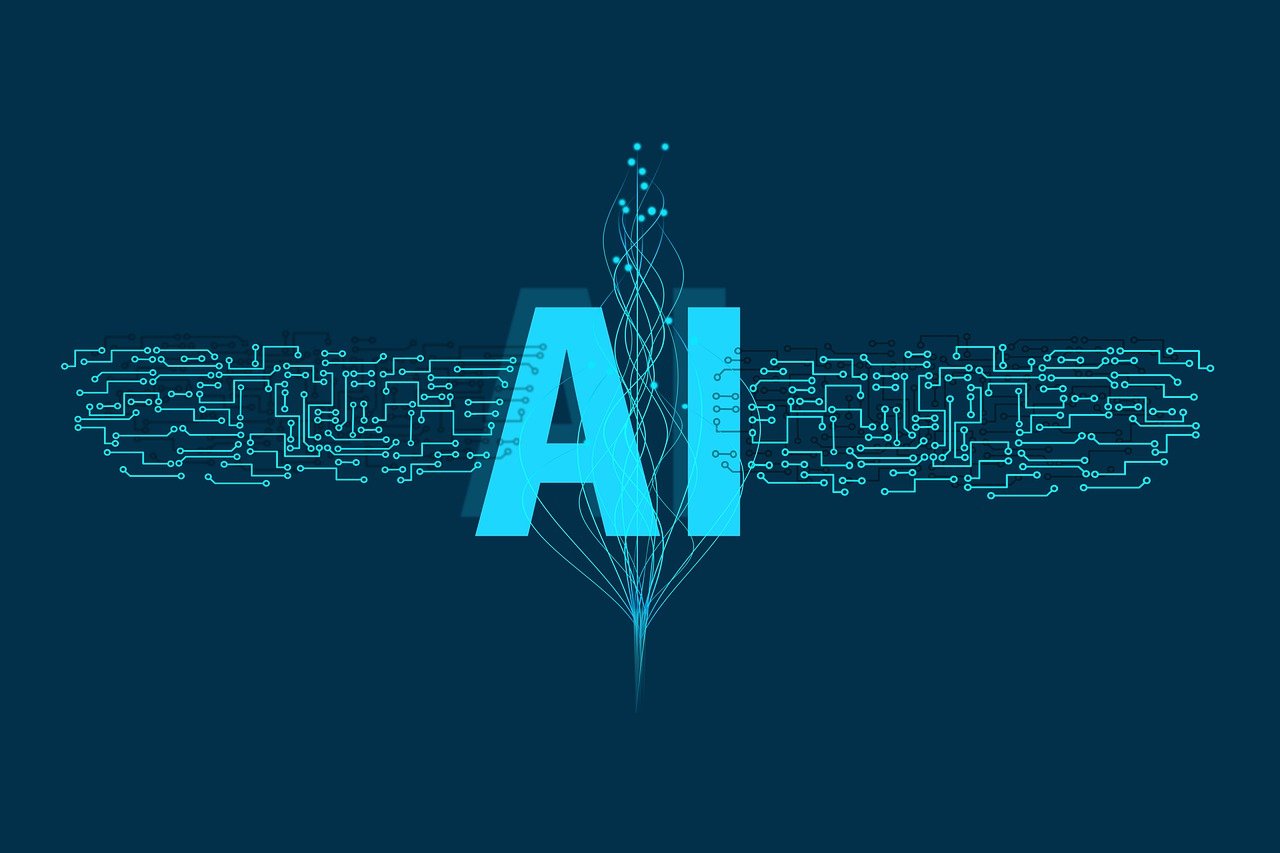In the world of intellectual property, the power of innovation and invention drives economic growth, competitiveness, and technological advancement. Central to this realm are patents, which provide inventors with exclusive rights to their creations. Patent claims, in particular, are the essence of a patent, defining the scope of protection granted. They are, however, notoriously complex and difficult to understand for those who lack a legal background.
This article explores a transformative technological development: the integration of Artificial Intelligence (AI) in patent law, specifically in the simplification of patent claim language. As AI continues to make inroads into various sectors, its application in the field of intellectual property promises to reshape how we protect and assert our innovations. In this in-depth exploration, we will dissect the intricacies of patent claim language, delve into the role of AI, examine tools and methodologies, and assess the impact of this convergence. We’ll also discuss the future of patent law and the ethical considerations involved.
Join us on this journey as we unravel the dynamic interplay between AI and patent claim language, ultimately simplifying a legal arena that has long been considered a labyrinth of convoluted jargon and legal jiu-jitsu. By the end of this article, you’ll have a profound understanding of how AI is revolutionizing the intellectual property landscape.

Understanding Patent Claim Language
Patent claims are the backbone of a patent document. They define the scope and boundaries of an inventor’s exclusive rights. When granted a patent, the inventor is awarded the right to prevent others from making, using, selling, or importing the patented invention. This legal exclusivity is set forth in the patent claims.
A patent document typically consists of two main parts: the specification and the claims. The specification provides a detailed description of the invention, including how it works, its components, and its intended use. However, it is the claims that ultimately matter most. They are the legally enforceable portion of the patent, and it is essential to understand their structure and content.
The Anatomy of a Patent Claim
Independent Claims:
These are the most critical elements of a patent. They stand alone and do not depend on any other claims. They are like the fortress walls, defining the outer boundaries of the invention. Independent claims are usually broad in scope.
Dependent Claims:
These claims are appended to independent claims. They add specific details or limitations to the invention defined in the independent claim. They are often used to narrow down the scope of the independent claims.
Understanding the language and structure of patent claims is a prerequisite for comprehending the essence of any patent. Independent claims are where the real strength of a patent lies, as they establish the broadest protection. They need to be clear and concise to avoid potential infringement disputes.
However, drafting these claims in clear, precise, and yet comprehensive language has been a perennial challenge. The need for a balance between clarity and scope often results in highly complex language and terminology, which is far from accessible to non-legal professionals and sometimes even to patent examiners.
This complexity has led to delays in patent examinations, increased legal costs, and in some cases, difficulties in enforcing patents effectively. It is this very problem that AI is beginning to address.
The Importance of Simplified Patent Claims
Accessibility for Non-Legal Professionals
One of the most significant challenges with patent claims is their accessibility. The language and terminology used in claims are often highly technical and legalistic. This creates a significant barrier for non-legal professionals, such as entrepreneurs, inventors, and even engineers, who may struggle to comprehend the boundaries and protections of a patent.
Simplified patent claims can bridge this gap, making it easier for non-legal professionals to understand the scope of a patent. This accessibility can be a game-changer, enabling inventors to make more informed decisions about their innovations, potential collaborations, and licensing opportunities.
Speeding Up the Patent Examination Process
Patent examiners face a daunting task when reviewing patent claims. The intricacies and complexities of language can slow down the examination process. If claims are convoluted or unclear, it can lead to repeated examinations, prolonging the time required to grant a patent.
With simplified patent claims, examiners can more quickly and accurately assess whether an invention is novel and deserving of protection. This can lead to more efficient and streamlined patent examination processes, ultimately benefiting inventors and innovators by reducing waiting times and expediting the protection of their intellectual property.
Reducing Litigation Risks
The ambiguity and complexity of patent claims can also create a fertile ground for patent disputes and litigation. When claims are unclear or open to interpretation, it becomes challenging to enforce patent rights or defend against claims of infringement. This not only increases legal costs but also introduces uncertainty for businesses and innovators.
Simplified patent claims can reduce the risk of patent litigation by providing clarity and precision in defining the scope of protection. Clear and concise claims leave less room for interpretation, making it easier to resolve disputes and protect intellectual property without resorting to costly legal battles.
Enabling Innovation Through Clearer Protection
In a rapidly evolving technological landscape, innovation is paramount. Clear and simplified patent claims can play a significant role in fostering innovation. When inventors and companies have a better understanding of the intellectual property landscape, they are more likely to invest in research and development, knowing that their innovations can be adequately protected.
Furthermore, simplified patent claims can encourage collaboration and licensing agreements. When parties can easily understand the scope of a patent, they are more likely to engage in mutually beneficial partnerships, leading to the development of new technologies and products.
AI in Patent Law
Artificial Intelligence has emerged as a powerful force of change in various industries, including the legal field. AI encompasses a range of technologies, from Natural Language Processing (NLP) to machine learning and deep learning. In the legal domain, AI is employed for tasks such as contract analysis, legal research, due diligence, and more.
NLP, in particular, has played a crucial role in transforming the way legal professionals work. It enables computers to understand, interpret, and generate human language. This technology has opened up exciting possibilities for simplifying complex legal documents, including patent claims.
AI’s Impact on Intellectual Property Law
In the realm of intellectual property law, AI has shown its potential in various aspects. From prior art searches to the analysis of patent portfolios, AI-powered tools have improved the efficiency and accuracy of legal work. Moreover, AI can offer data-driven insights that can inform patent strategies and decision-making.
AI’s influence in patent law is not limited to search and analysis; it extends to the core of patent claims, simplifying language, and ensuring that claims are understandable to a broader audience. This approach has the potential to democratize intellectual property, making it more accessible to startups, individual inventors, and small businesses.
The Role of AI in Patent Claim Language Simplification
At the heart of AI’s contribution to patent law is its role in patent claim language simplification. By leveraging NLP and machine learning, AI systems can analyze patent claims, identify complex or redundant language, and propose simplifications that maintain the core of the protection while enhancing clarity.
These AI tools can work in synergy with patent attorneys and professionals to create claims that are not only legally sound but also comprehensible to a broader audience. By automating much of the language simplification process, AI can significantly reduce the time and cost associated with patent drafting and examination.
AI Tools for Simplifying Patent Claim Language
Natural Language Processing (NLP) and Its Applications
Natural Language Processing (NLP) is the branch of artificial intelligence focused on enabling machines to understand, interpret, and generate human language. In the legal field, NLP is a game-changer. NLP algorithms can analyze and process large volumes of text, such as patent claims and legal documents, at a speed and scale that is impossible for human professionals to match.
In the context of patent claim language simplification, NLP tools can break down the complexity of claims, identify jargon or overly technical language, and suggest alternatives that are more understandable to non-legal professionals. These tools can also ensure that the language remains legally sound, addressing a critical concern in patent law.
Machine Learning Algorithms for Patent Analysis
Machine learning algorithms play a vital role in the development of AI tools for simplifying patent claims. These algorithms can be trained on extensive datasets of patents and legal documents, learning to recognize patterns, detect redundancies, and propose alternative language.
For example, a machine learning algorithm can identify common phrases or terms that frequently appear in patent claims, suggesting simpler or more commonly used alternatives. It can also assess the language in context, ensuring that simplifications do not inadvertently alter the meaning of the claim.
AI tools for patent claim language simplification are not hypothetical; they are in use today with impressive results. For instance, AI-powered platforms can analyze patent claims, identify complex language, and offer suggestions for simplification, significantly reducing the time and effort required in drafting and examining patents.
One noteworthy example is IBM’s AI-based patent drafting tool. This system leverages machine learning to analyze patent claims and identify areas that can be simplified without compromising legal validity. By automating this process, IBM has managed to accelerate patent drafting and reduce the complexity of patent claims.
While the advantages of using AI for patent claim simplification are clear, it’s essential to understand the limitations as well. AI can significantly enhance the clarity and accessibility of patent claims, reducing legal costs and streamlining the examination process. However, it is not a silver bullet. AI tools are only as good as the data they are trained on, and they may struggle with nuanced or context-specific language.
Implementing AI in Patent Claim Language Simplification
The Process of Integrating AI into Patent Claim Drafting
Integrating AI into patent claim drafting involves a systematic approach. This process typically comprises several key stages, from data collection and preprocessing to final legal review. Here’s an overview of the steps involved:
- Data Collection and Preprocessing: The first step is to gather a substantial dataset of patent claims and related documents. This dataset is used to train the AI model. Preprocessing includes cleaning and formatting the data for analysis.
- Model Training and Development: Machine learning models are trained on the dataset. These models learn the nuances of patent language, enabling them to identify complex and redundant phrases. The models are fine-tuned to ensure that they provide meaningful suggestions for simplification without compromising legal integrity.
- Review and Refinement by Legal Experts: While AI can offer valuable insights, a final review by legal experts is essential. They assess the proposed simplifications to ensure that they do not inadvertently alter the legal meaning of the claims. The human touch is critical to maintain the validity of the patent.
- Iterative Improvement: AI models are not static. They learn and adapt over time. As more data becomes available and the AI tools are used, they continue to improve their suggestions and understanding of patent language.
Ethical Considerations in AI-Driven Patent Claim Language Simplification
The integration of AI in patent law, particularly in simplifying patent claim language, raises important ethical considerations that must be addressed to ensure the responsible use of this technology.
Data Privacy and Security Issues
- Data Privacy: AI tools used in patent claim language simplification often require access to large volumes of patent data. Protecting the privacy of inventors and innovators is crucial. Ethical concerns emerge when handling sensitive patent information, especially in cases where proprietary or confidential data is involved.
- Data Security: Ensuring the security of data is paramount. The storage and transmission of patent data must be safeguarded against unauthorized access and cyber threats. This responsibility falls both on the organizations that develop AI tools and the users who employ them.

AI Bias and Fairness in Patent Claims
- Bias in Language Simplification: AI models can inadvertently perpetuate biases present in the training data. This could lead to biased language simplification, favoring certain technological domains or inventors. Efforts should be made to mitigate and correct bias in AI tools.
- Fairness in Patent Examination: AI systems should not favor patent applicants from specific regions or industries. Ensuring fairness in patent examination is crucial to maintaining a level playing field for inventors worldwide.
Transparency and Accountability
- Transparency: Users of AI-powered patent simplification tools should understand how these tools work and the extent of their influence. Transparent AI systems are more accountable, as users can assess the quality and validity of suggestions.
- Accountability: When errors occur in the patent claim simplification process, accountability becomes a critical issue. Determining who is responsible for the outcome, whether the AI tool provider or the user, is essential for maintaining the integrity of the patent system.
Legal and Ethical Obligations
- Maintaining Legal Validity: While AI can suggest simplifications, the final responsibility for ensuring the legal validity of patent claims rests with human patent attorneys and legal experts. Failing to meet these obligations could result in patent claims that do not provide the intended protection.
- Professional Responsibility: Legal professionals employing AI tools must exercise their ethical responsibilities diligently. Their expertise is necessary to navigate the legal intricacies of patent claims, even when assisted by AI.

